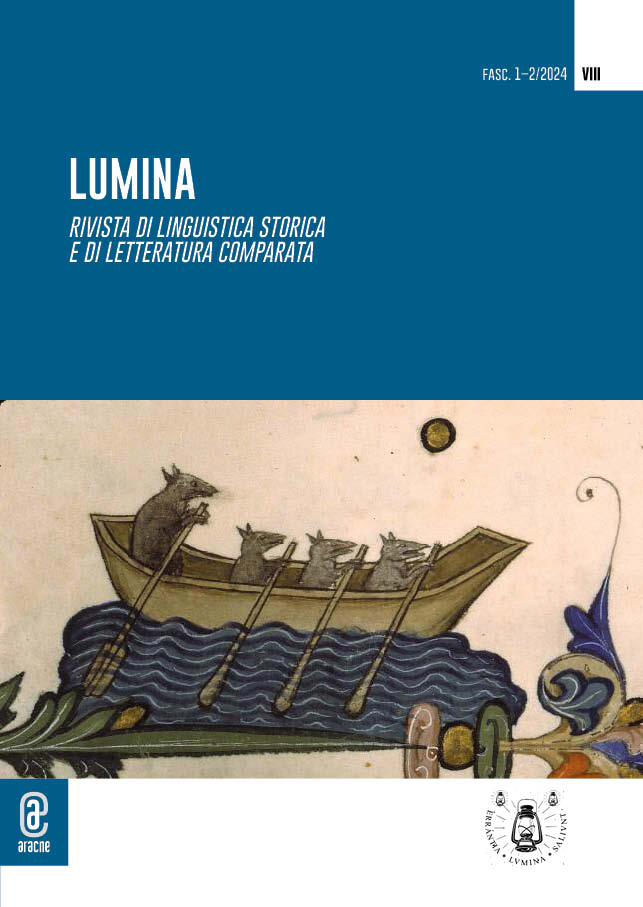Extracted from publication Lumina
Storia delle idee
«À plus hault sens». La semiotica esoterica di Rabelais. Parte seconda. Il mundus inversus di Pantagruel
DOI: 10.53136/979122181964916
Pages: 361 -398
Publication date: June 2025
Publisher: Aracne
Sulla base del prologo del Gargantua, la prima parte dell’articolo («Lumina» VII, 2023) difendeva, contro le diffuse letture materialistiche dell’opera di Rabelais, una sua interpretazione anagogica e dunque spirituale. Questa seconda parte suggerisce che il funzionamento dell’anagogia rabelaisiana possa essere descritto e spiegato attraverso il quadro teorico cristiano-platonico, al contempo cosmologico e semiotico, secondo il quale le realtà terrene sono un’“immagine invertita” delle realtà celesti di cui sono il simbolo. Viene così ipotizzato che il simbolismo del mondo alla rovescia utilizzato da Rabelais vada interpretato secondo la teoria delle «somiglianze dissimili» di Dionigi Areopagita, precisata attraverso le osservazioni di René Guénon relative all’«analogia inversa» tra il mondo intelligibile e il mondo sensibile. Particolare attenzione è dedicata all’episodio dell’Isle des Esclots nel Cinquiesme livre (cap. 26) e alle disavventure semiotiche di Panurge nel corso di buona parte del Tiers livre. Viene inoltre discusso il significato che il proverbio «Faire de vessies lanternes» potrebbe assumere come metafora del processo anagogico nel contesto rabelaisiano, in rapporto anche alla rilevante componente del mundus inversus di Pantagruel costituita dalla cultura e dagli argots delle “classi pericolose”.
On the basis of the prologue of Gargantua, the first part of the paper («Lumina» VII, 2023) defended, against the widespread materialistic readings of Rabelais’ work, an anagogical and therefore spiritual interpretation of it. This second part suggests that the functioning of Rabelais’ anagogy can be described and explained by means of the Christian-Platonic theoretical framework, at once cosmological and semiotic, according to which earthly realities are an “inverted image” of the celestial realities of which they are the symbol. It is thus hypothesized that the symbolism of the upside-down world used by Rabelais should be interpreted according to Dionysius the Areopagite’s theory of “dissimilar similarities”, clarified through René Guénon’s remarks relating to the “inverse analogy” between the intelligible world and the sensible world. Particular attention is paid to the episode of the Isle des Esclots in the Cinquiesme livre (chap. 26) and to the semiotic misadventures of Panurge in the course of a large part of the Tiers livre. A discussion is carried out about the meaning that the proverb “Faire de vessies lanternes” could assume as a metaphor for the anagogical process in the Rabelaisian context, also in relation to the significant component of Pantagruel’s mundus inversus constituted by the culture and the argots of the “dangerous classes”.


